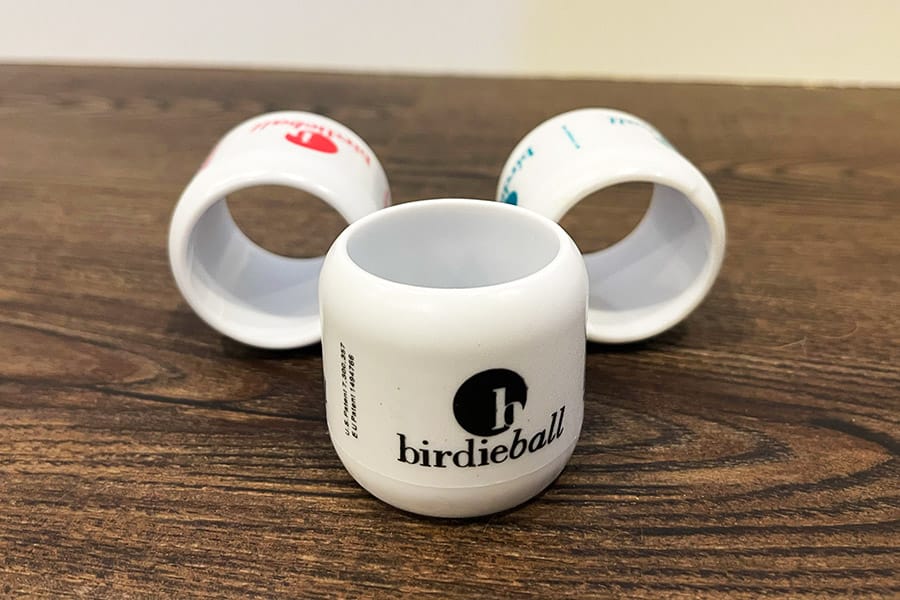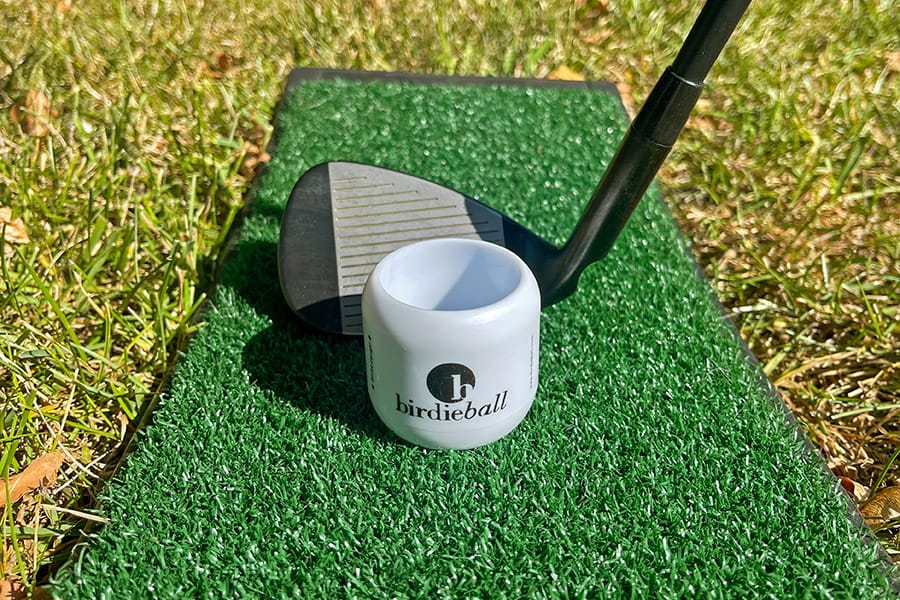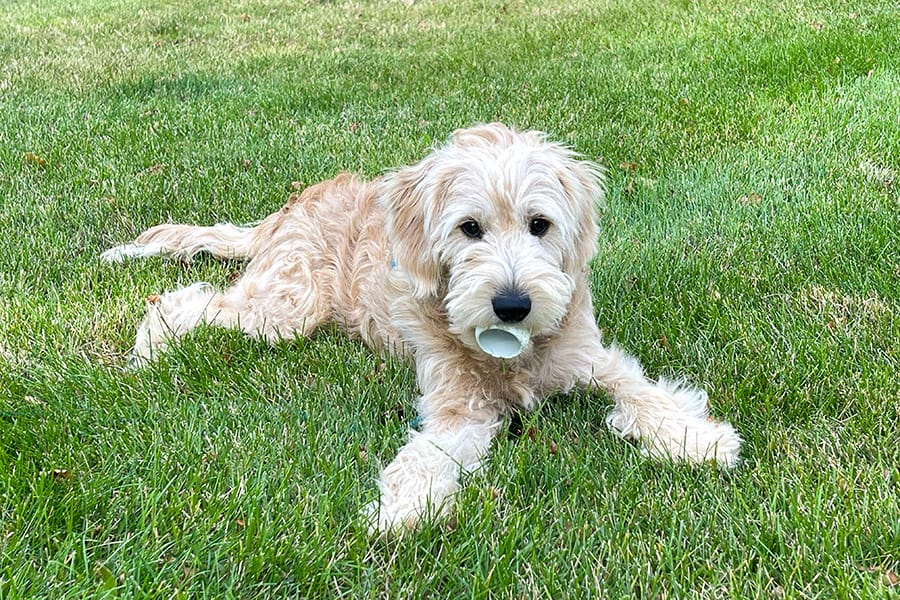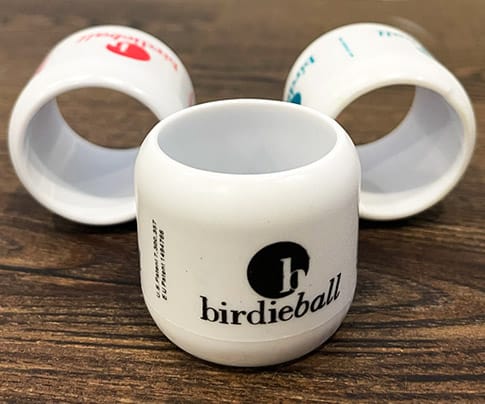BirdieBall Review
This post may contain affiliate links. As an Amazon Associate I earn from qualifying purchases.
The BirdieBall is a limited-range practice golf ball that you can hit anywhere with 40 yards of space. In this BirdieBall review, I’ll cover how well the BirdieBall works, if it’s effective for practice, and some of the accessories they sell.

What is a BirdieBall?
A BirdieBall is a plastic practice golf ball, that doesn’t look that different from a cut off PVC pipe. It’s been designed to fly just like a real ball would off a club, but the cut out makes it so it can only travel around 40 yards. This makes it ideal to practice with in a backyard, park, or anywhere else with limited space.
This sounds like a great solution for people who want to practice without driving to the range, but does it work? Continue this BirdieBall review to find out!
Does the BirdieBall work and can you shape shots?
I’ve been a BirdieBall customer now for many years. I initially purchased one of their putting greens, which came with some free BirdieBalls to try out. I was surprised at how much fun they were to hit for not really looking much like a golf ball.
The feel of hitting a BirdieBall of a club is a little different than hitting a golf ball because of the softer feel, but it’s not all that dissimilar. Once you get past the different shape you won’t really notice that you’re not practicing with a ball.

When hitting the BirdieBall, make sure to position the ball with the opening facing upward. If you’re hitting off a mat, this is easy to do, or if you’re in the grass, just roll it with your club until it’s set up correctly. This position makes sure the feel and flight work as designed.
The flight of the ball tends to start as you’d expect, but then climb and drop steeply, which is what I assume prevents it from going further than 40 yards. This allows you to still see exactly where the ball would travel based on your strike. The only thing you can’t tell is your normal distance, but if you get a pure strike I find that the BirdieBall tends to make a whistling noise that it doesn’t make when striking it fat or thin.
The BirdieBall responds to directional strikes just like a real golf ball would, meaning you can tell when you push or pull the ball. It also spins allowing you to see if you’re slicing, hooking, drawing, or fading the ball.

What clubs can you use?
You can use any club with a BirdieBall. It doesn’t come with a tee system (and normal tees won’t work with the large opening), so if you want to hit a driver other than off the deck, you’ll need to purchase a Velocity Tee from them for $16.
I find that with some of the higher irons or woods I can get the BirdieBall to fly a bit further than 40 yards (maybe 60 at most), especially if the shot is more of a stinger. So make sure you’ve got some extra room if you’re using a long iron. They aren’t too likely to break anything but you probably don’t want to risk hitting anything fragile.
Do they last?
BirdieBalls hold up very well. They should last hundreds of shots before they begin to break down or wear out. Eventually they will get some wear and may crack (supposedly faster if you’re hitting them in cold temperatures), but it takes awhile.

My dog also loves to chase and grab them which has done the most damage to mine, but even he doesn’t completely destroy them. I’d recommend buying three to twelve of them just in case you lose any.
How do they compare to other practice balls?
I think the top two places to practice golf are on a range or a simulator as you can get a full picture of the shots you’re hitting. After that I think the BirdieBall is the next best thing.
Hitting a real ball into a net without a simulator is helpful for getting some swing basics down but it’s hard to tell where the ball is going. Many practice golf balls are this same way. If you hit a wiffle ball, it’s not going to fly like a real ball would. Many cheap limited-flight foam balls have this same issue.
You might look into a more realistic foam ball like an AlmostGolf ball, but you’ll need more room than you’d need with the BirdieBall (around 100 yards), which would remove the option of the backyard for me.
BirdieBall accessories

BirdieBall sells a number of useful accessories that you may want to consider. You can also purchase these items in various packages along with your BirdieBalls.
- StrikePad – This lets you hit BirdieBalls on any surface by protecting your club. It’s useful for setting in your yard if you want to protect your grass from taking divots. You can also buy a small hitting mat or a Birdie Turf to do this same thing, but this is a cheaper option.
- BirdieTargets – These are collapsable targets you can bring with you to practice chipping into. They’re a really great option for improving your game.
- BirdieHoop – This is a simple hoop with netting that you can set down for a closest to the pin target.
- Velocity Tee – This is set of tees for a driver and a fairway wood so you can tee up a BirdieBall.
BirdieBall Review Conclusion
Pros
- Spins & flies directionally like a real golf ball
- Limited distance so can use in a backyard or park
- Has a good feeling even though it’s plastic
- Fairly inexpensive
Cons
- Can’t estimate the total distance or height of clubs
- Will eventually wear down and break
- Need a special tee for a driver

BirdieBall – 4.4/5
BirdieBalls are the next best thing to hitting a real golf ball when you have limited space. They do a great job of showing the direction of your shots, making it easy to practice anywhere.